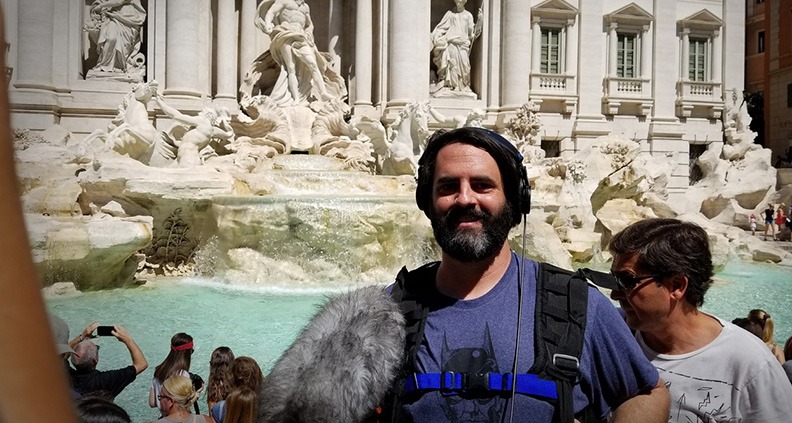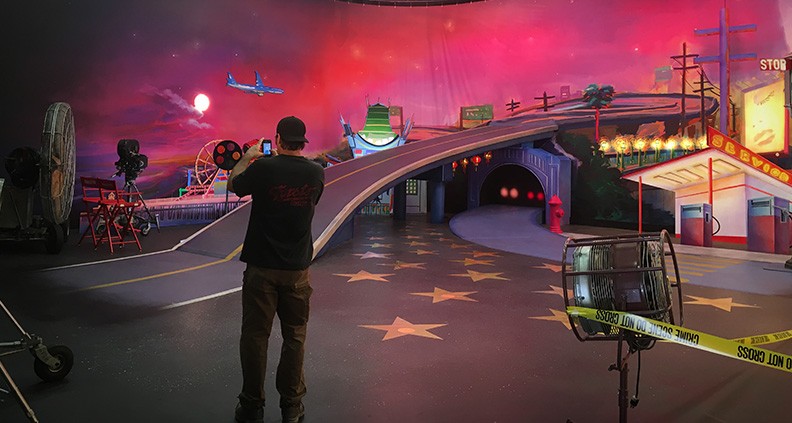Detail Oriented: ‘La La Land’ Sound Mixer on How To Get Started in Production Sound
Movies are a mosaic of moving parts. But we don’t always see which parts, or who’s moving them. Each month in Detail Oriented, Su Fang Tham explores some of the more specialized areas—and career paths—related to film production.
STEVE MORROW, SOUND MIXER
2016’s La La Land brought sound mixer Steve Morrow many accolades, pretty much ever since director Damien Chazelle’s throwback rom-com musical exploded onto the awards circuit two years ago. Morrow’s honors for the film have included the CAS award (Cinema Audio Society), a BAFTA nod and an Academy Award nomination for Best Achievement in Sound Mixing at the 2017 Oscars.
Morrow’s feature credits include Up In The Air, Crank and Little Miss Sunshine, while his small screen filmography includes the recently Emmy-nominated Netflix comedy GLOW and HBO’s Six Feet Under and Big Love. You can see more of Morrow’s artistry at work on October 5 in director Bradley Cooper’s remake of A Star Is Born—starring Cooper alongside Lady Gaga in the latest reimaging of the Hollywood classic.
We asked Morrow how he got started in the industry, just what sound mixing is exactly and were given the behind-the-scenes skinny into his role on two specific projects.

How did you land on sound mixing as a career and what sort of training did you have?
Morrow: I pursued filmmaking at Bellevue Community College [in Seattle] and all my projects sounded terrible. So, I signed up for a sound class and quickly put that knowledge to work. I boomed and recorded sound for my films and my classmates’ films. I’d just turned 18 when I learned that a local indie film, Where The Air Is Cool And Dark, was shooting in the area. I begged and pleaded to work for free as the boom operator. I worked for free and quickly learned the basics of the job, which seem so obvious now but completely eluded me at the time. Things like what an apple box is or how to set a C-stand. I worked on that film for six weeks—the hardest six weeks of my life! But I was hooked. I worked two jobs, saved every penny I could, and in May of 1995, I packed my bags and drove south to Los Angeles. I applied to work on any film that would hire me as a mixer or boom operator. My first job was with sound mixer Lionel Ball, who really helped me get my start by giving me any overlaps he had to mix. After a few months of working on anything I could, I started to get my own clients. Within six months I had enough days to join IASTE local 695, the sound union in Los Angeles. And that was when my career in sound truly began.
What’s the difference between sound mixing and sound editing?
Morrow: Sound Editing is finding and collecting the sounds for a movie that were not recorded during the filming of that movie. These are sounds that will complement the sounds recorded while the movie was being filmed and create the ambience of the movie. Sound Mixing includes both Post and Production sound. For Production sound mixing, the main goal is to record the actors’ performance as cleanly as possible. This is mainly the dialogue of the film or, in a musical, the singing. I also like to gather ambient noise and location-specific sounds that may help the Post Sound team. I always put it like this: if the movie’s sound is a gold bar, I’m the strip-miner grabbing as much good material as possible so the guys in Post can find the golden nuggets. Post sound mixing is taking all of the components from the sound editors and blending it in seamlessly with the recorded dialogue or vocals from the production mixer.

How long before principal photography did you have your first discussions with Damien Chazelle’s team about their vision for La La Land?
Morrow: I first talked about the sound goals of the film in the initial interview to get the job. I was hired the next day… and then the film was pushed six months! But we continued to discuss when they would want live recording [for the actors’ singing] vs. when they’d prefer to use dynamic playback.
Which departments did you work with the most?
Morrow: We always work closely with Costumes as we have to attach microphones to the actors’ clothing. Locations [department] is a huge help when picking great sounding locations and helping make a noisy location into a quiet one.
You’ve described La La Land as a film that posed challenges on a daily basis. What were some of those challenges?
Morrow: The most challenging scenes were the opening freeway scene, the roommates’ song moving through their apartment and Sebastian singing on the pier. The challenge for us on the freeway was providing enough speakers for all the dancers and singers to hear the music in sync up and down the entire freeway—with the entire thing being filmed in one shot. We hid speakers behind every other car and had a mobile speaker cart that moved with camera to keep the singer on camera in sync. There was a ton of planning. The roommates’ song was filmed in a real apartment in Koreatown, and the actors needed to be able to hear the song cleanly in every room of the set. The challenge was similar: we needed to power and place tons of speakers and make them invisible to the camera. The challenge was finding small spaces to fit and hide all the cabling and gear. The pier scene was actually the most challenging of the three. The shot was a full 360-degree shot, so we all needed to be out of sight. This put us about 1,000 feet down the pier and required running 4,000 feet of cable. There was a run of cable for the Boom Op to hear, an earwig to play the music for Ryan [Gosling], a speaker to play back music and the final run for Ryan’s radio mic. Micheal Kaleta [sound utility] ran the cable while Craig Dollinger [boom operator] and myself set up the transmitters and receivers.
https://www.youtube.com/watch?v=anCzxM5y7SI
More recently you worked on Clint Eastwood’s The 15:17 to Paris, about the Americans who helped stop the 2015 Thalys train attack en route to Paris. How was that film different than a larger-scale project like La La Land?
Morrow: 15:17 was a dream come true. Clint Eastwood is a legend and a wonderful director to work with. The biggest challenge on 15:17 was being as small as possible and mobile recording on the train. We had to make sure our gear was small enough to easily transport on the boats in Venice but still robust enough to work well on a train while traveling at 200mph and filming. We wired the actors and kept antennas in the same train car to avoid interference. The hardest part was making sure we had good signal from the radio mics while traveling at 200mph. We used 12 tracks of audio and had a secondary package to record “surrounds” of the train that the Post team might want to add to the film later. We recorded with a DPA 5100 surround mic daily. There was a lot of preparation and planning, and in the end it all worked out perfectly.
What was it like to film at the Coliseum and Trevi Fountain in Rome?
Morrow: Filming in Rome was a once-in-a-lifetime experience. We flew from Venice in the Warner Brothers jet to Rome and had a police escort all day going from location to location. When we were finished, Clint [Eastwood] treated us all to Gelato at the Vatican. It was an incredible experience and an amazing way to see Rome.
Is there a specific sound mixer’s work that you admire?
Morrow: I’ve always admired Simon Hayes’s [Oscar-winner for 2012’s Les Miserables] work. I believe he and I have a similar passion for the work. The goal is always 100% production sound for the dialogue, and I know we both strive for that every time.
To see what else Steve Morrow has been up to, please visit his IMDb. Have a suggestion for a future Detail Oriented topic or interviewee? Let us know in the comments.
Not a Member of Film Independent yet? Become one today and be sure to subscribe to our YouTube channel and follow us on Facebook, Twitter and Instagram.
